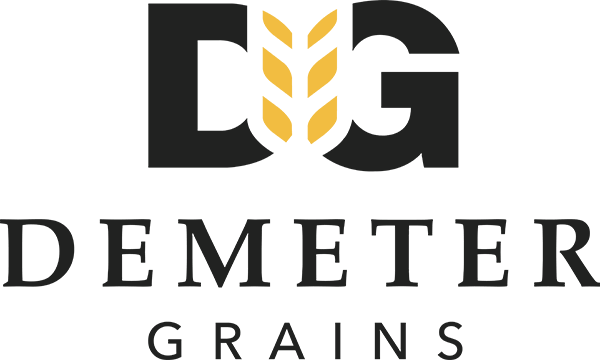Introduction
Inventory and orders are the backbone of supply-chain-driven businesses. Whether you sell online, offline, or hybrid, growth comes from one foundation: having the right stock, fulfilling fast, and running lean operations.
But business today is multi-channel and fast-moving. Orders don’t come from one source; they emanate from online stores, marketplaces, B2B portals, distributors, and retail counters. The issue isn’t simply stock precision; the issue is harmonization, automation, and real-time decision making. This is where the inventory and order management software would come into effect. It consolidates inventory, automates order routing, enhances warehouse productivity, and prevents revenue loss from stockouts, delays, or operational mistakes.
This guide explores every aspect: workflows, features, automation approaches, best tools, and methods for implementing the best solution tailored for 2025.
What is Inventory and Order Management Software?
Inventory and order management software provides a single, centralized digital environment that can manage and co-ordinate every strand of inventory and customer orders throughout a business. Rather than relying on spreadsheets, manual stock checks, and disparate tools, the software provides a single home for a business to track products, monitor stock levels, process incoming orders, and ensure each order is correctly dispatched in good time. It acts like the “central nervous system” for product-based companies: monitoring stock in real-time, averting the likelihood of mistakes, automating warehouse activities, and offering speedy, accurate fulfillment across online and offline channels. In simple words, it means every item you sell is looked after, every order is processed efficiently, and no stock gets misplaced or oversold.
Core Functions of Inventory and Order Management Software
1. Inventory Tracking
This solution offers real-time visibility into stock availability at every location, be it warehouses, stores, fulfillment centers, or even distributor points. It also tracks product quantities at the Stock Keeping Unit level to assure you of what you have and where you have it. It serves to eliminate the possibility of selling out-of-stock items, enhances planning, and ensures the accuracy of the stock across the entire business.
2. Order Processing
The software automatically captures orders from an e-commerce site, marketplace, retail shop, or B2B portal; checks availability in stock; and assigns those orders to the best warehouse for fulfillment whenever a customer places an order. In this way, it removes manual entry, reduces order errors, and speeds up the processing of every sale-even when thousands of orders come in during peak season.
3. Warehouse Operations
Within the warehouse, the system directs the team for the entire pick-pack-ship process by producing the digital pick lists, identifying which bin or rack contains the items, and ensuring that the items specified for the order have been properly selected by barcode scanning. It also automates the process of creating packing labels and shipping slips.
4. Replenishment
The software measures the velocity of product sales and monitors the level of safety stock on hand. It automatically notifies the purchasing team or triggers the creation of a PO when items reach a low quantity. You’ll never run out of fast-moving inventory and can avoid desperate buying decisions that create poor pricing or delays. It makes sure enterprises hold just enough inventory-not too little, not too much.
5. Returns Management
Real-world business involves products coming back due to returns, damages, or RTO in e-commerce. The software manages the entire reverse journey: logging of returned products, their categorization in sellable or damaged lots, their restocking, issuance of refunds or credit, and updating of inventory accordingly. This eliminates any sort of losses, fraud, and confusion during returns.
6. Reporting & Analytics
The system analyzes sales velocity, inventory age, performance of the SKU, seasonal trends, and warehouse efficiency continuously.
Why Every Business Needs Inventory and Order Management Software in 2025
Modern supply chains are not one-way. Inventory keeps on moving and shifting across many nodes:
- From vendors to warehouses
- From warehouses to stores or customers
- From stores to end-buyers
- And often back into the warehouse through returns
Today’s selling environment comprises marketplaces, namely Amazon/Flipkart; D2C websites; physical stores; distributors; social commerce; and B2B buyers. Without a centralized system, stock data gets fragmented, teams work in the dark, and mistakes multiply.
How Inventory & Order Management Software Works
1. Inventory Visibility
It starts off by having the system synchronize inventory levels across all stock points, including warehouses, retail stores, online virtual stock pools, and distributor locations. This real-time visibility makes sure that the business knows how much inventory exists at any time and where each unit is located.
2. Order Capture
Next, each order that is placed-irrespective of whether it comes from a brand’s website, Amazon, Flipkart, a point-of-sale system in a retail store, or a B2B distributor portal-is seamlessly captured into a single dashboard. There’s no need for manual entry or switching between multiple platforms. Every sales channel feeds into one source of truth.
3. Order Allocation
When an order comes in, the system quickly determines the most efficient fulfillment center based on a real-time analysis of stock levels and the distance of available warehouses to customers. The software considers shipping distance to optimize costs and service-level commitments to maximize fulfillment center profitability.
4. Warehouse Execution
After the system allocates an order, operational fulfillment in the warehouse can commence. For instance, the software generates digital pick lists which direct order pickers to the exact rack and bin locations for every item. Workers scan barcodes, pack the order with the correct materials, and print shipping labels and invoices. This structured workflow reduces errors significantly and quickens order processing.
5. Tracking
Once packed, the orders are forwarded to integrated courier partners or logistical systems. Details about order tracking are automatically shared with customers, which also reflects real-time delivery status. This stage provides transparency and enhances customer trust in the dependability of the brand.
6. Inventory Update
The moment the order is shipped, the quantity updates in every sales channel and warehouse automatically. There is no delay, nor is manual adjustment required-the system will always keep the record real and updated, avoiding miscounts.
Key Features of Inventory and Order Management Software
Real-Time Inventory Sync
The software tracks live stock counts across warehouses, retail stores, marketplaces like Amazon and Flipkart, brand websites, and distributor networks. It updates quantity instantly after every sale, return, or stock transfer. This puts an end to overselling, saves your customers from disappointment, and lets businesses promise realistic delivery times with confidence.
Order Consolidation Across Channels
All orders now process through a single platform, resolving the confusion that arises from separate Shopify dashboards, marketplace seller panels, POS systems and Excel. This single view decreases manual input and data entry errors, and effectively captures all orders. This has positively improved speed and reliability during peak volumes.
Smart Fulfillment Routing
After an order is received, the system automatically selects the most suitable warehouse or store for dispatching orders using intelligent stock, customer location, shipping partnership details, delivery SLA agreements, and priority customer data. This approach optimizes delivery speed and cost.
Pick, Pack, and Ship Automation
Warehouse operations are transformed through the software’s automated processes of generating digital picking lists, assigning picking routes, and product verification by barcode scanning. It handles shipping label and invoice printing as well. Such workflows improve accuracy, productivity, and ensure right product delivery.
Demand Forecasting & Replenishment
Based on sales history, seasonality, and vendor lead times, the system predicts reorder and stock levels. That avoids two major killers of business: stockouts that cost lost sales and excess stock tying up capital. Instead, the business maintains an optimal inventory balance year-round.
Returns & RTO Automation
Returns are a reality in retail and e-commerce. To that end, the software logs returns, inspects the condition of returned items, classifies them, and updates stock accordingly, along with triggering refund processes. It also manages RTOs wherein shipments bounce back. This reduces revenue leakage and preserves operational hygiene.
Benefits of Inventory & Order Management Software
Higher Order Accuracy
Barcode scanning and automated workflows ensure that the right items are always picked and shipped. This reduces return rates, protects margins, and improves customer trust.
Prevents Stockouts
With real-time notifications and auto-buy, never let high-demand items run out. This keeps sales churning and supports ranking performance in the marketplace.
Faster Fulfillment
Improved pick routes, automated packing, and seamless integrations with couriers make for quicker dispatch times, hence enabling quicker deliveries in today’s fast-moving commercial world.
Reduced Working Capital Pressure
It helps in identifying slow-moving stock items and gives an accurate forecast of their demand, thus enabling businesses to unlock cash tied to excess inventories.
Better Customer Experience
In addition, accurate orders, predictable delivery, and fewer cancellations improve customer sentiment, driving repeat business-a core tenet for long-term brand success.
Multi-Channel Scaling Without Chaos
Companies are able to expand across new marketplaces, regions, and retail formats without losing control of stock or operations. The system scales seamlessly as order volume grows.
Strong Audit & Compliance
Every movement of the SKU is traceable: Inward, outward, returns, wastage. It ensures compliance, fraud prevention, and operational accountability.
Challenges This Software Solves
Without structured systems, businesses commonly over-sell their products. Forced cancellations negatively affect reputation and lead to lost sales. Warehouse staff pick up the wrong items, return costs are expensive, and customer trust is broken. Stock remains unused in the wrong warehouse when another location may be at short supply. Returns cause confusion with heavy losses if uncontrolled. And without demand insights, businesses make guesses-usually stocking too much or too little.
Yet today’s system can guarantee all stock is in sync in real-time, orders are routed automatically, warehouse teams follow along via barcode-guided workflows, and returns follow structured rules. Decisions are data-driven, not emotional or manual. And businesses operate confidently instead of reacting to chaos.
Best Inventory & Order Management Platforms
Agrichain
It is ideal for high-growth D2C, B2B, and retail brands that need one unified system for inventory, warehousing, logistics, and marketplace operations. Agrichain is built for real Indian supply chain workflows, offering both real-time visibility and deep process automation.
Unicommerce
It’s popular with e-commerce-heavy brands that sell a lot on marketplaces. It excels in marketplace automation, but it requires additional tools for deeper warehousing and demand planning.
Zoho Inventory
Excellent entry-level solution for SMEs who are just starting digitization. Easy to deploy, with solid basic automation, but will likely need upgrading as order volume increases significantly.
Odoo
A flexible ERP platform provides modular tools that can be configured based on your business needs. Best suited for technology-enabled businesses with internal IT support.
SAP Business One
Luminaris Enterprise Edition: Enterprise-class system for very large companies needing sophisticated workflows, high compliance, and multi-entity control. High capability but higher complexity and cost.
Why does Agrichain hold the advantage?
Agrichain stands out because it provides comprehensive visibility and execution through the entire operational cycle as opposed to just inventory sync or order routing. For the first time, we have integrated marketplace management, warehouse automation, logistics execution, returns control, and replenishment intelligence into an all-in-one solution. This means no more disparate tools for growing brands. They can now scale within one operational system and have full visibility and control.
Choosing the Right Inventory and Order Management System
Every company has a different operational DNA, with varied structures, numbers of warehouses, product lines, sales channels, order sizes, and logistics complexity, operational scope, and scale. The right system aligns to these factors instead of forcing a business to change its operations just to fit the software.
Inventory Model
First, evaluate how your inventory moves and where it sits. Do you store products in one warehouse or many distribution centers throughout cities? Do you stock products in retail stores or rely on distributor networks? Companies with multi-warehouse or distributed models of inventory require real-time synchronization and automation of the warehouse, while the operation of a single warehouse might be more concerned with accuracy and light automation. Understanding your inventory footprint is key to selecting a scalable system.
Sales Channels
Different channels require different workflows. Smooth integrations to stores are required for any D2C selling through Shopify, with fast fulfillment logic. Marketplace-heavy sellers require synchronizations with Amazon, Flipkart, and other platforms for avoiding overselling. B2B companies use scheduled purchase orders, bulk sales, and credit terms. Retail POS needs store-level stock and billing. Select a system that fits your sales mix today and will grow with you as new channels are added.
Tech Stack
Your inventory system needs to integrate seamlessly with your existing tools-be it SAP, Tally, Zoho, Shopify, WooCommerce, marketplaces, or logistics partners. API-driven platforms with open integration frameworks are future-proof because they let you plug in new services, ERPs, accounting systems, WMS modules, and carriers as you grow. Stay away from systems that would lock you into closed ecosystems.
Scale & Order Volume
A business shipping 100 orders per day operates differently from one shipping 10,000 orders. The right software should perform at your current scale and grow with you. As order volumes rise, automation, pick optimization, returns control, and forecasting become essential — and the platform should support that journey without disruptions.
Warehouse Type
Identify whether you have a single warehouse, a multi-node fulfillment network, dark stores, micro-fulfillment hubs, or 3PLs. For multilocation businesses, there are varying needs, such as intelligent routing and distributed inventory control. Under a 3PL setup, you will need integration with logistics partners and shared workflow control. The type of warehouse model you adopt will be your guide in the choice of software.
Implementation Roadmap of Inventory and Order Management Software
Adopting inventory and order management software is not just a tech project; it’s an operational transformation. Success will depend on structured onboarding, clean data, and team adoption. Here’s how a smooth rollout typically works:
Process Mapping
Start with mapping your business processes as they currently exist-from how stock enters your warehouse to how orders flow, returns move, and teams operate. Define warehouse layout, bin structures, inbound and outbound workflows, and inventory controls. A clear blueprint ensures the system matches your real-world operations.
Data Migration
The foundation of any successful implementation is clean and structured data. Organization and import of the SKU codes, category structures, barcodes, supplier details, purchase pricing, and customer lists are managed. Poor data leads to inaccuracies. Therefore, this phase has to be disciplined, with much attention paid to detail.
Integrations
It is then integrated into your current tech stack: ERP systems, such as SAP or Tally; e-commerce platforms, including Shopify; marketplaces; POS systems; and logistics carriers. These integrations ensure zero manual touchpoints for seamless data exchange across your business.
Pilot Run
Instead of deploying everywhere on day one, a pilot phase is performed in one warehouse or one region. The teams follow the new workflows, refine the processes, and fix the gaps. This controlled adoption prevents disruption and builds confidence before scaling across locations.
Rollout
The system expands across other warehouses, retail outlets, or fulfillment points once the pilot succeeds. Teams are trained, SOPs are laid down, and change management ensures everybody operates smoothly on the new system.
Continuous Optimization
After deployment, the business begins to layer in deeper automation: demand forecasting, auto replenishment, advanced barcode workflows, logistics optimization, and performance analytics. It’s a system that learns alongside a business, getting increasingly efficient month after month.
Common Challenges & Practical Fixes
Team Adoption
Even the best software fails if teams don’t use it properly. Hands-on training, SOP documentation, barcode discipline, and gradual adoption all help people embrace the change confidently, not resist it.
Data Errors
Inaccuracies arise due to manual entry, inconsistent SKUs, and paper-based systems. Accurate, barcode-based movement, controlled access rights, and validation checkpoints eliminate mistakes, ensuring data integrity.
Return Losses
Returns, in particular, can seriously eat into margins if not tightly controlled. Structured RTO processes, quality inspection workflows, and automated restock classification prevent misuse, fraud, and revenue leakage.
Scalability
Businesses often grow beyond their basic systems. Cloud-based architectures and modular upgrade paths enable smooth scaling without ripping out your infrastructure each year. The scalable platform enables geography, channel, and SKU growth without losing control.
Future Trends in Inventory & Order Management
The future of inventory is intelligent, automated, and predictive. Software will not only record activity but also anticipate needs, automate decisions, and execute fulfillment autonomously.
Predictive Inventory Models
Systems will learn the demand behavior and predict stock requirements ahead of orders, reducing stockouts and optimizing working capital.
Autonomous Warehouse Robotics
Picking, packing, and replenishment will increasingly be handled by robots, drones, and automated storage solutions, improving accuracy and efficiency within the warehouse.
Same-Day Marketplace Fulfillment
The marketplaces will push faster delivery standards. Distributed fulfillment, dark stores, and hyper-local hubs will become the norm for competitive sellers.
AI-Driven Demand Planning
AI will refine forecasting by reading historical sales patterns, seasonal shifts, marketing activity, and even market sentiment to recommend precise ordering strategies.
Multi-Node Omnichannel Networks
Brands will operate across mixed fulfillment networks: warehouses, stores, partner hubs, and 3PL nodes. The software will then route inventory automatically to where it is needed most.
Conclusion
Inventory and order operations are no longer simple administrative activities; they’re core drivers of growth, customer experience, and brand reliability. In that context, today’s inventory and order management software gives your business the real-time control, accuracy, and automation necessary to operate at speed and scale. With clear visibility across sales channels, faster fulfillment, and smarter stock planning, companies can reduce waste, protect margins, and reliably delight customers. As product lines expand and channels multiply, the brands adopting the right system early will build intelligent, resilient supply chains, unlocking the ability to grow confidently and profitably without operational chaos.












